There are many ways to pop a balloon, but did you know that having too many sharp objects against a balloon at the same time will actually make it harder to pop it!?
This super simple and fun science experiment teaches the physics behind why a balloon pops in a fun and interactive way with just a few items you likely already have around the house. So let’s get started with this exciting Balloon and Pin Experiment.
Get more eye-popping Balloon Science Experiments here!
PIN THIS EXPERIMENT FOR LATER
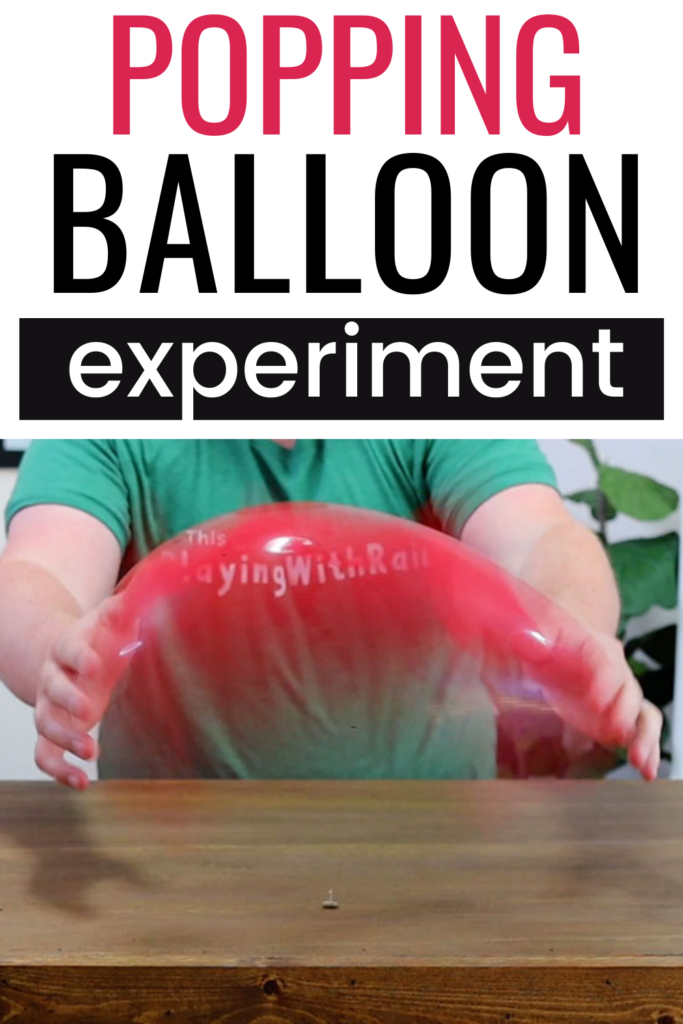
The first time I tried this experiment I was blown away with what I saw…and my kids were even more amazed than I was!
Balloon and Pin Experiment
This post may contain affiliate links. As an Amazon Associate, I earn from qualifying purchases.
Supplies Needed:
Non popping balloon experiment
- Inflate a large balloon with air.
- Place 1 pin or thumbtack on a table with the pointy side up.
- Hold the top and bottom of the balloon and turn it to its side while lowering it towards the pin.
- Watch what happens when the balloon touches the pin.
- Group about 15-20 pins on the table pointing up.
- Inflate a new balloon and lower it towards the pins.
- Push the balloon firmly onto the pins and watch what happens.
Step 1: Inflate your balloon
Go ahead and grab one of your large balloons and fill it up nice and big with air. The easiest way to do this is to use your mouth, but you could also use an air compressor with a nozzle if you want.
When you are done filling up your balloon, don’t forget to tie it off to keep the air from escaping. Then set your balloon aside for a little bit.
Step 2: Grab a thumbtack
Open up your package of thumbtacks or pushpins (I prefer to use pushpins because they are a little easier to stand up on the table the pointy side up).
Place just one thumbtack on the table with the broad, flat side down and the pointy needle part facing upward.
Step 3: Hold the balloon sideways and lower it towards the pin
**Before you grab your balloon and get ready to see if it is going to pop, this is a great step to put your safety goggles on! If and when the balloon pops, you want your eyes to be protected from flying balloon debris!**
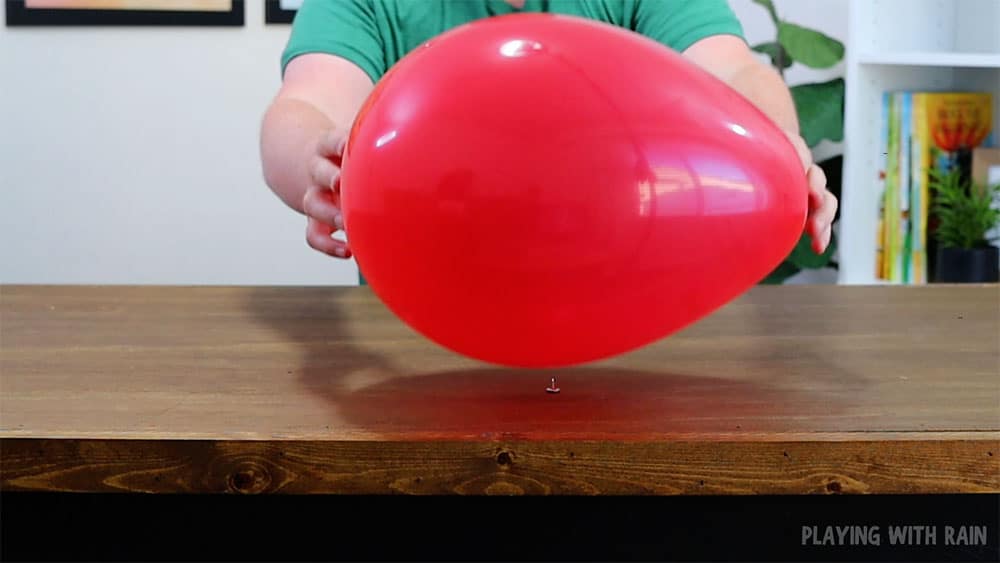
Place one hand on the top of the balloon and one on hand on the bottom of the balloon. Then turn the balloon so that it is sideways as you lower it towards the sharp and pointy pin below!
Step 4: What will happen when the balloon touches the pin!?
You probably already guessed that the balloon will pop when it touches the pin…and you were exactly right! The pressure of the sharp needle on the balloon is too much for the latex of the pressurized balloon and it almost instantly pops!
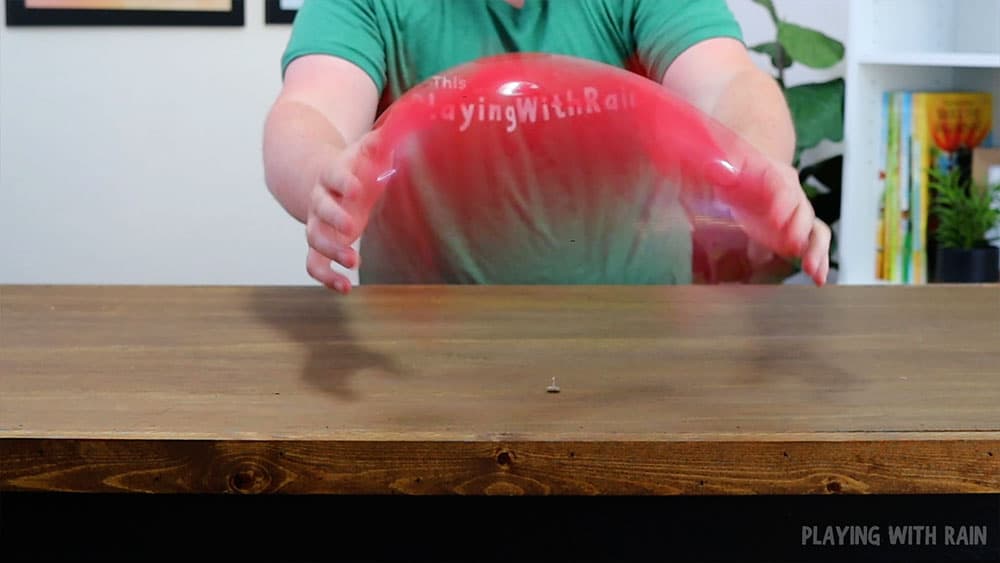
Step 5: Let’s try it again but with more pins this time!
Now that we know the balloon easily pops using one pushpin/thumbtack, let’s add some more sharp and pointy objects to the mix and see what happens!
Gather about 15-20 thumbtacks or pushpins out of your package and cluster them fairly close together on a table or a plate. Make sure that all of the pointy, sharp sides and facing upwards ready to greet the balloon.
Step 6: Fill-up a new balloon and lower it towards the pins
Okay, now that we have a cluster of sharp pins lurking below on the table, go ahead and inflate a new balloon nice and big again and tie it off.
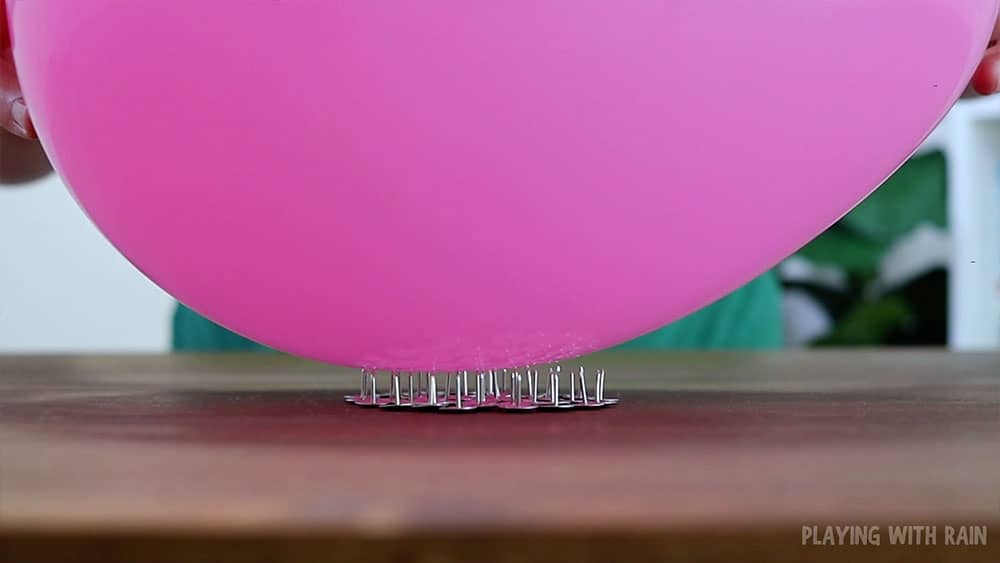
Hold the balloon so the side (long part) of the balloon will come in contact with the sharp pins below. Begin lowering the balloon slowly towards the pointy objects below.
Step 7: Push the balloon onto the pins and see if it pops!
Now it’s time to see if our balloon will pop as we drop it towards the group of sharp thumbtacks below! Make sure you still have your safety glasses are still on from step 3 and then drop the balloon onto the pins.
What happens!? Does the balloon explode or is it still inflated?
That’s right! Believe it or not, you just made your balloon unpoppable by adding multiple sharp needles together!
You can have some fun with this and keep dropping the balloon onto the pins. You can even push the balloon firmly down onto the needles without it popping too!
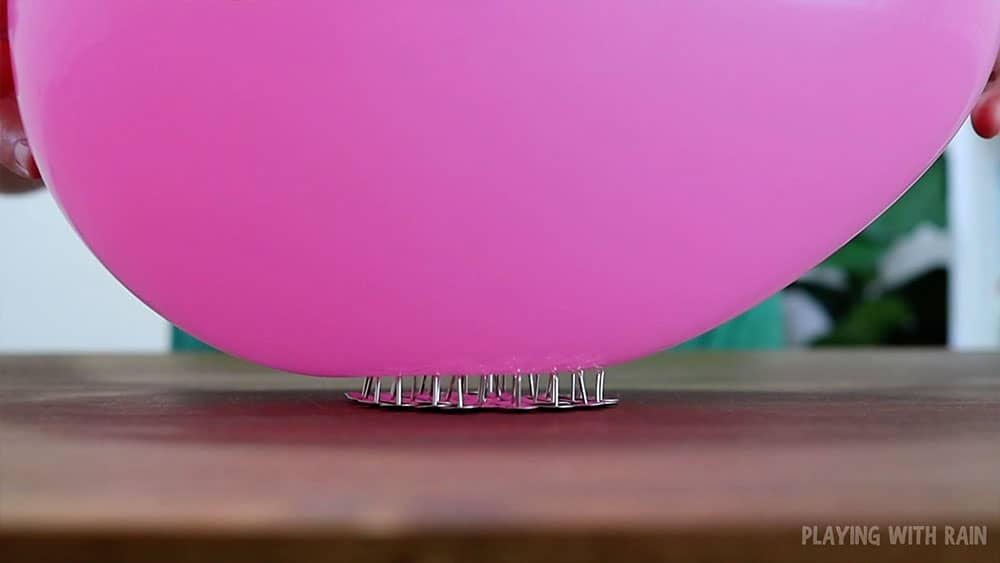
Why do balloons pop?
Balloons typically pop when the air pressure on the inside of the balloon becomes stronger than the latex material that creates the outside of the balloon.
One way that the air pressure can become stronger than what the latex can handle is to weaken the latex material.
This can happen in many ways such as heat from fire or the sun as seen in this experiment How to Fireproof a Balloon, but in this case, the latex was weakened by the sharp thumbtack.
The sharp thumbtack put enough pressure on the balloon to weaken the latex and made a small hole in the balloon.
Once the small hole was created, the air pressure inside the balloon quickly took advantage of the hole in the balloon and instantly popped the balloon.
Balloon experiment physics:
In this balloon and pin experiment, we learned that a balloon will pop instantly when it comes in contact with a sharp object like a thumbtack or a pushpin, but it will not pop if it is dropped upon multiple sharp objects!
The science behind this balloon and pin experiment has to do with the same physics as to why a person can lie on a bed of nails unharmed.
Of course, I was not brave enough to lie on a bed of nails, so I chose to use the balloons in this example instead.
One needle, thumbtack, or pushpin can apply much more pressure on a concentrated area than a large group of 15-20 sharp objects can on the same balloon.
When the balloon is placed on 15 or more pins, the same amount of pressure that one pin was contacting the balloon with is now dispersed across a greater surface area of the balloon between all of the pins.
This is also the same reason that it is nearly impossible to do this Breaking an Egg With One Hand Experiment unless you find a way to apply pressure in a specific area.
Another way to look at this is that each of the 15 thumbtacks is now putting only one fifteenth of the pressure on the balloon that the single thumbtack was.
Because no single pin is pushing with as much force when they are grouped together, there is not enough force to pop the balloon and the balloon will seem unpoppable!
PIN THIS EXPERIMENT FOR LATER
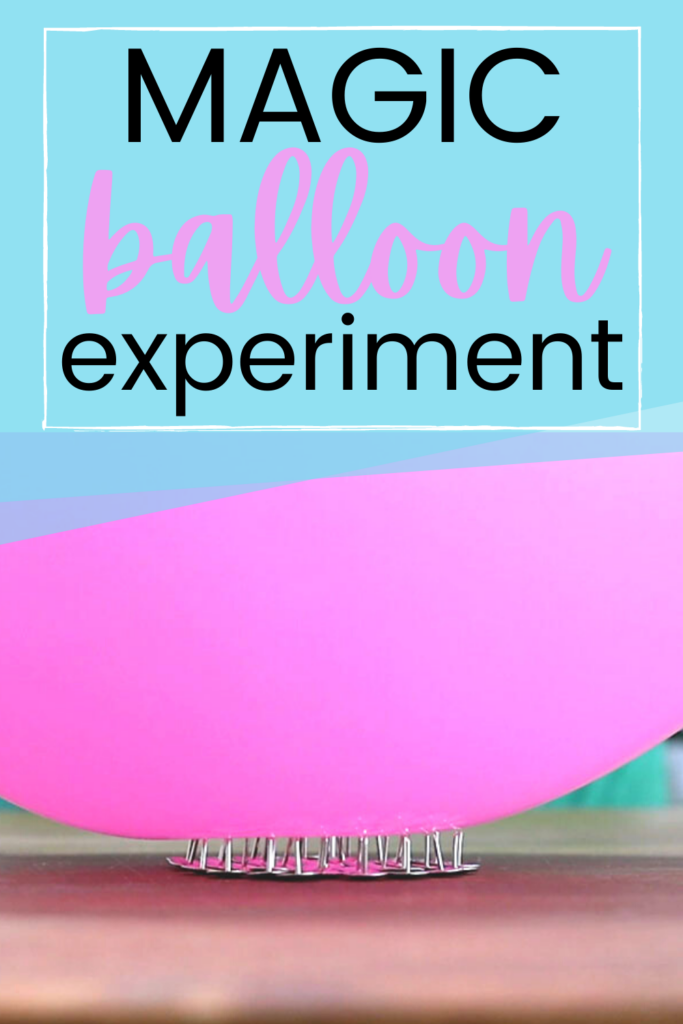
Leave a Reply